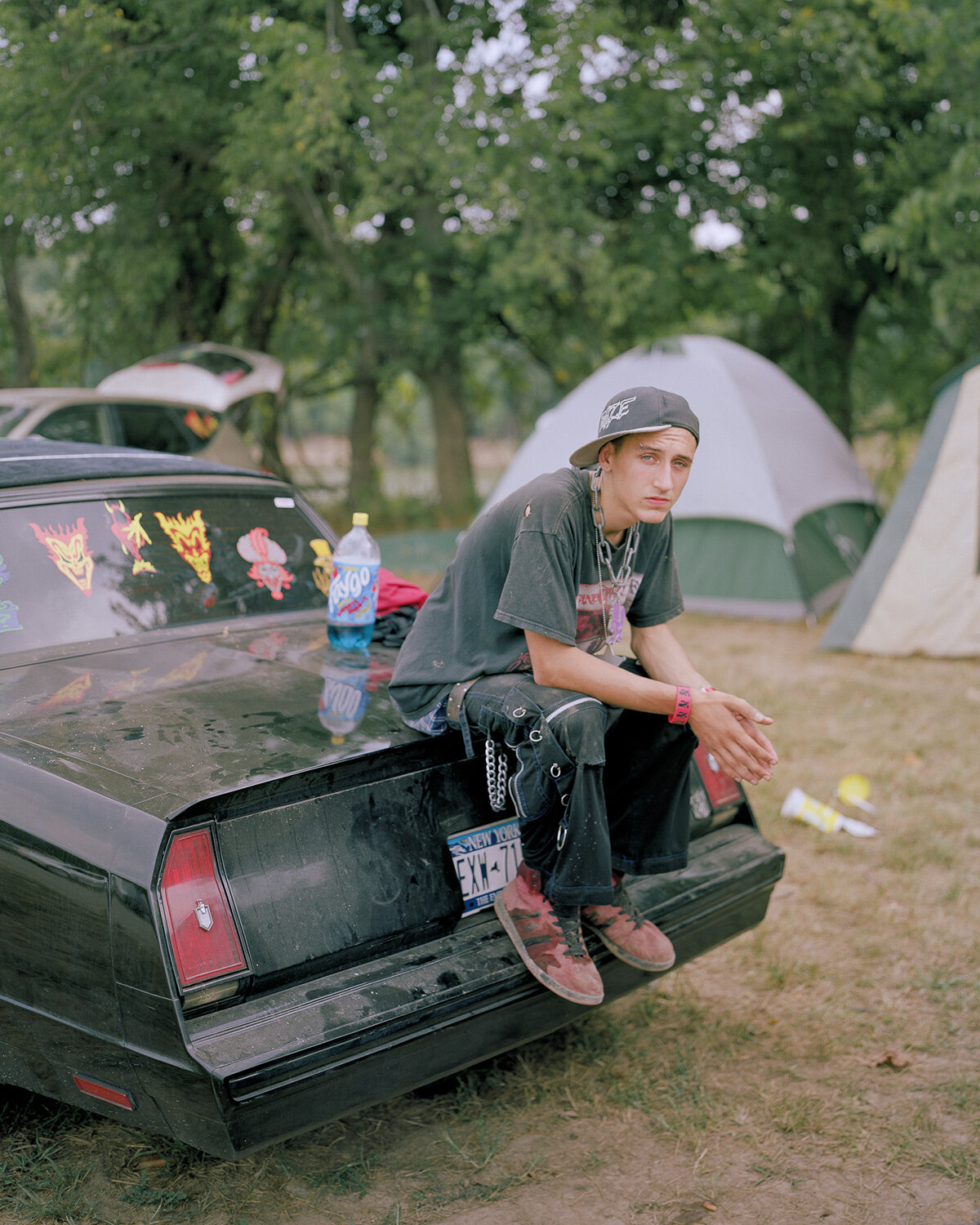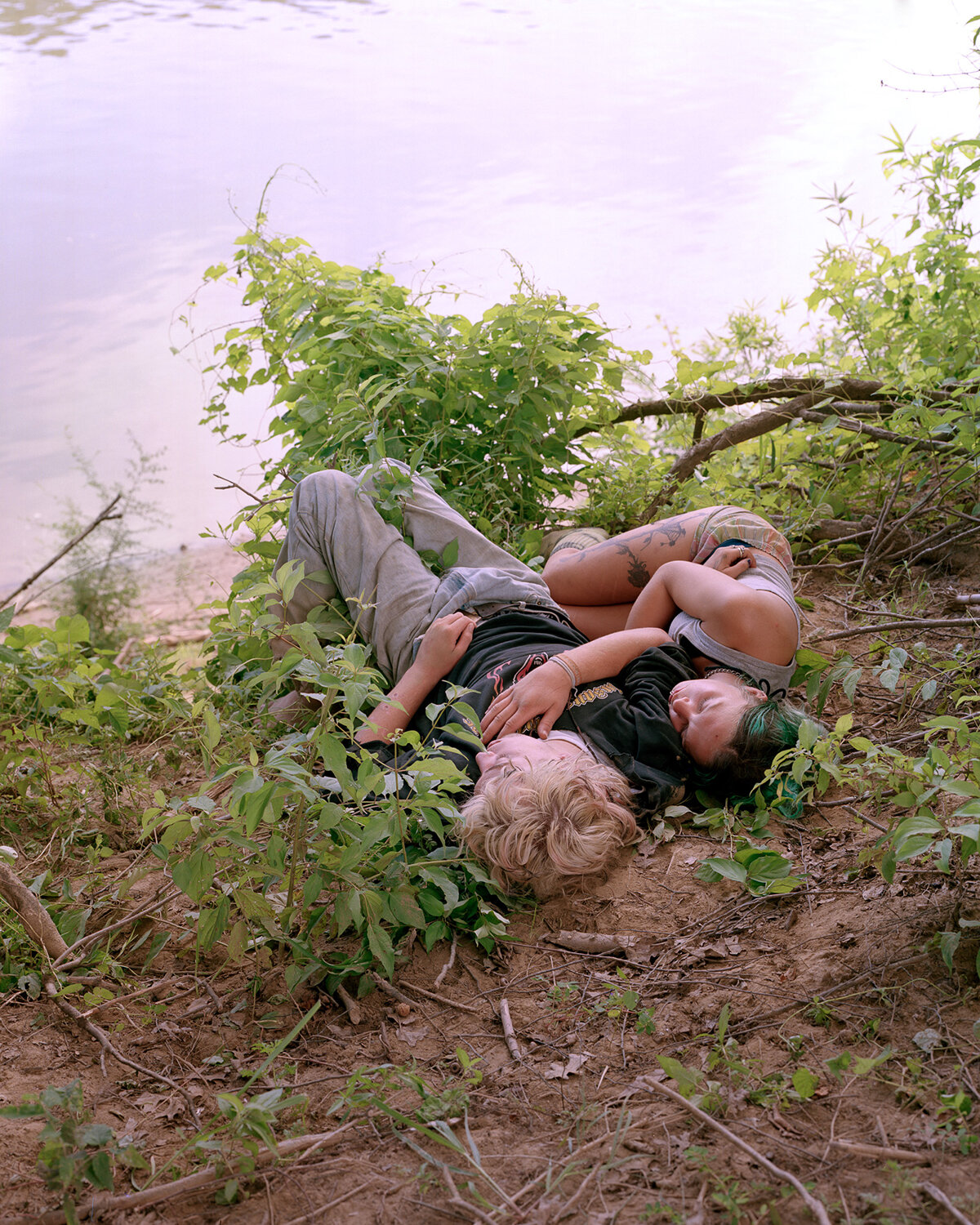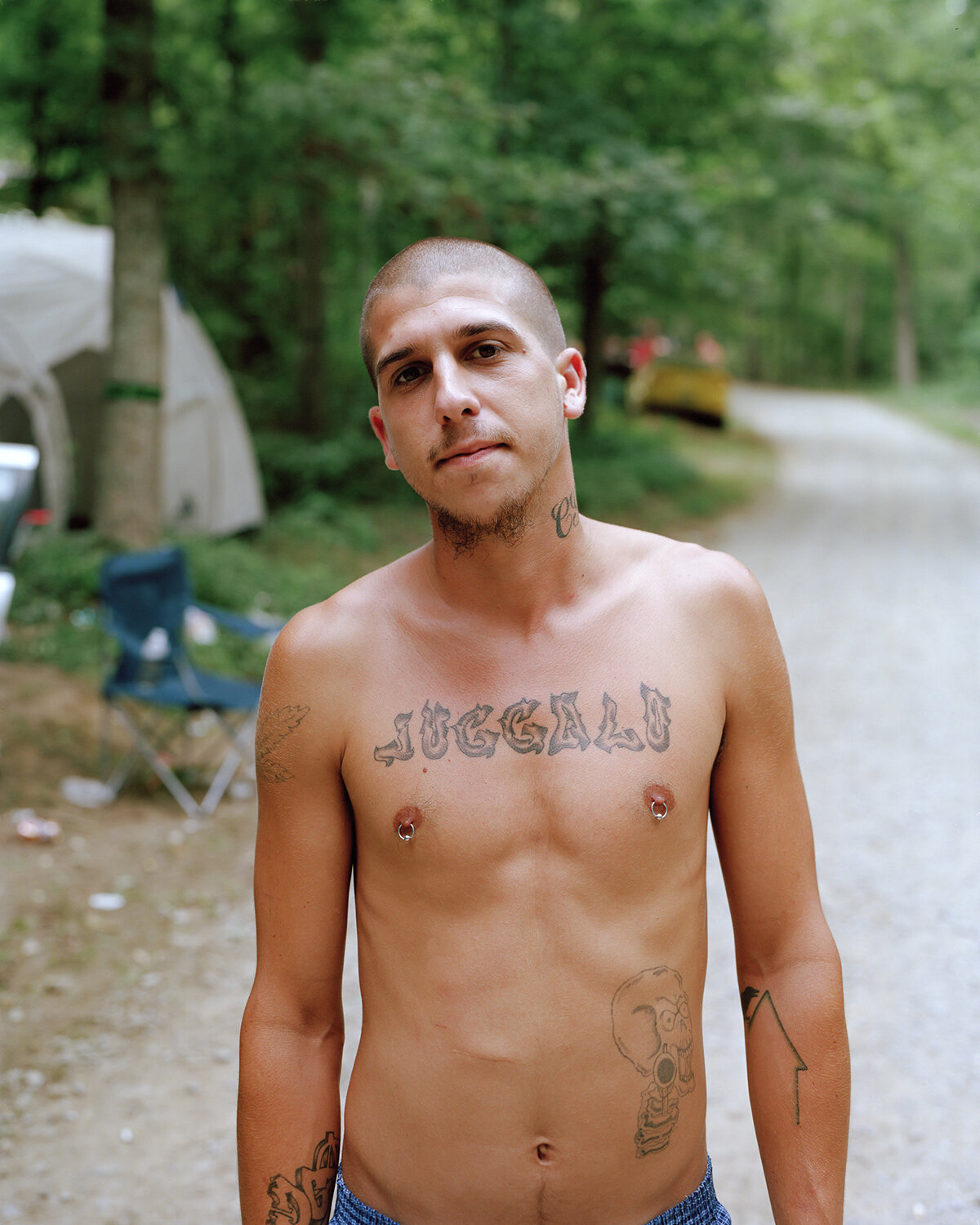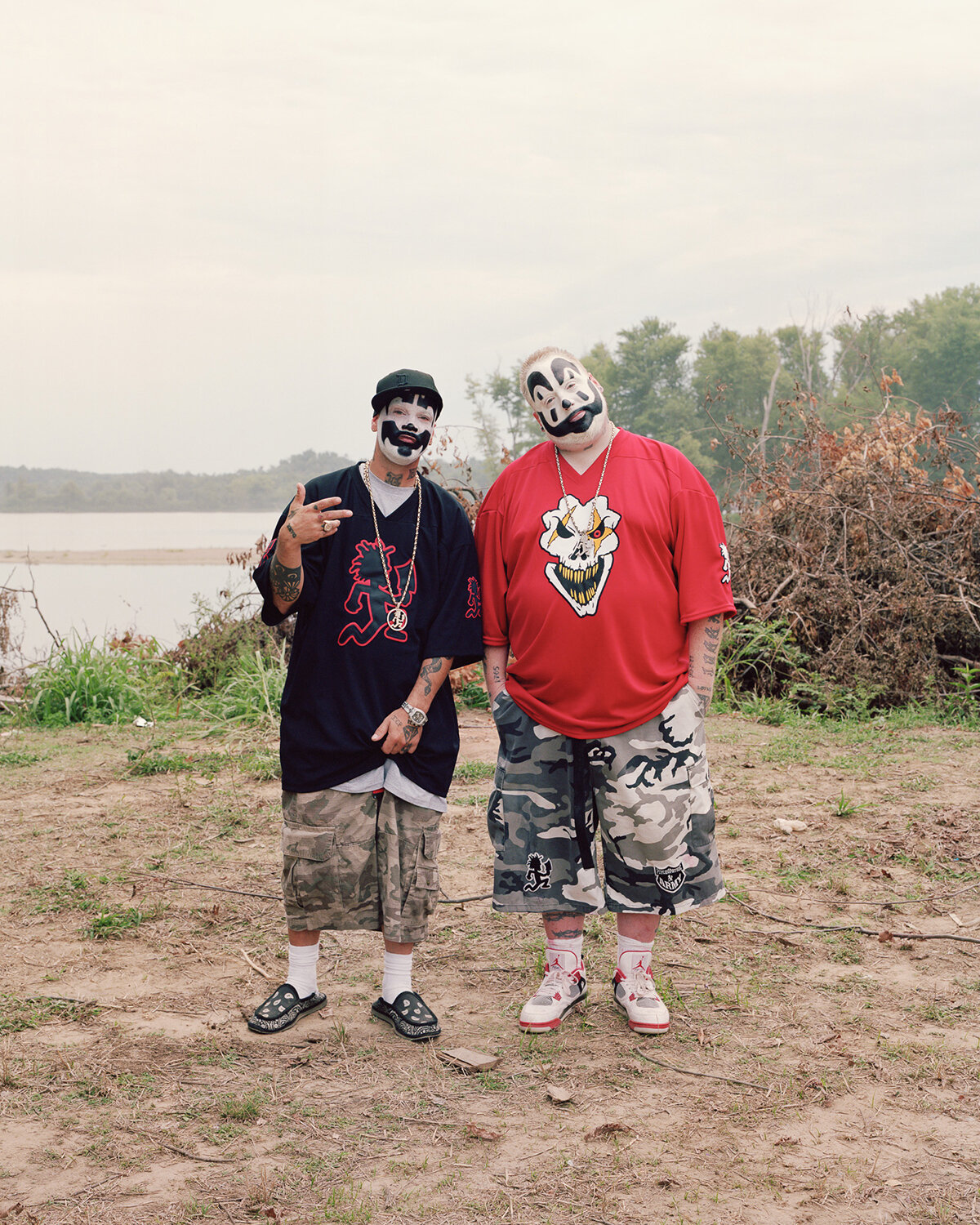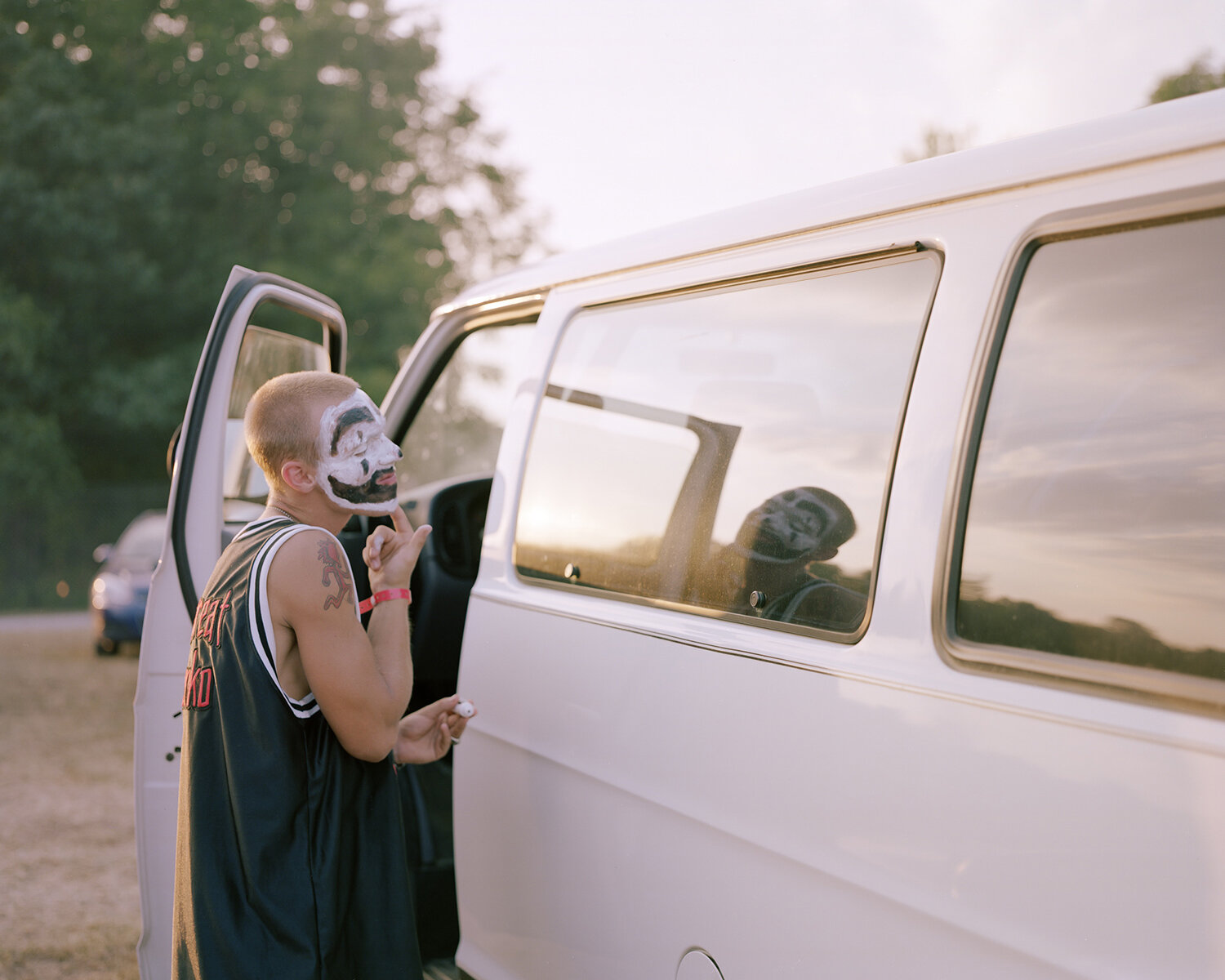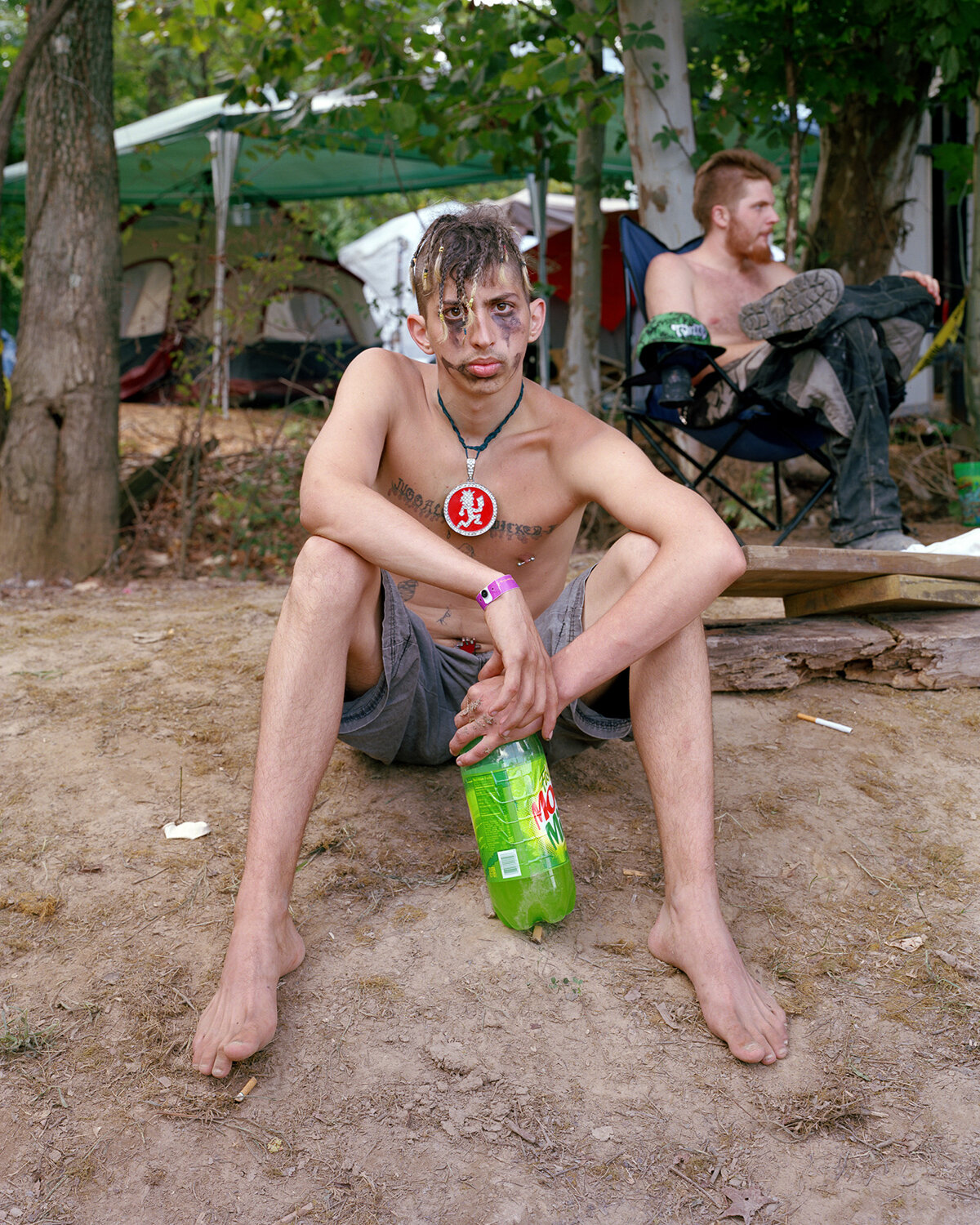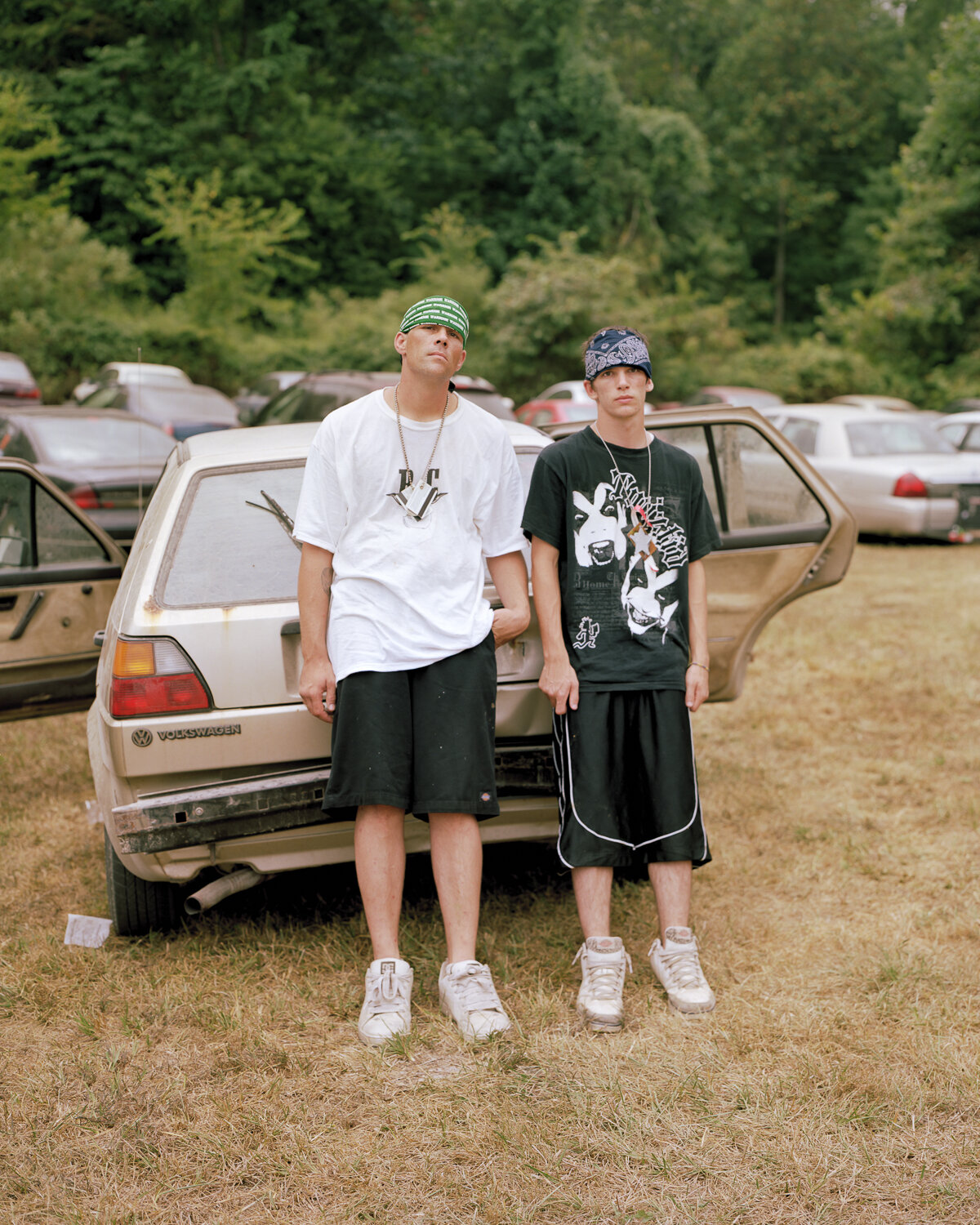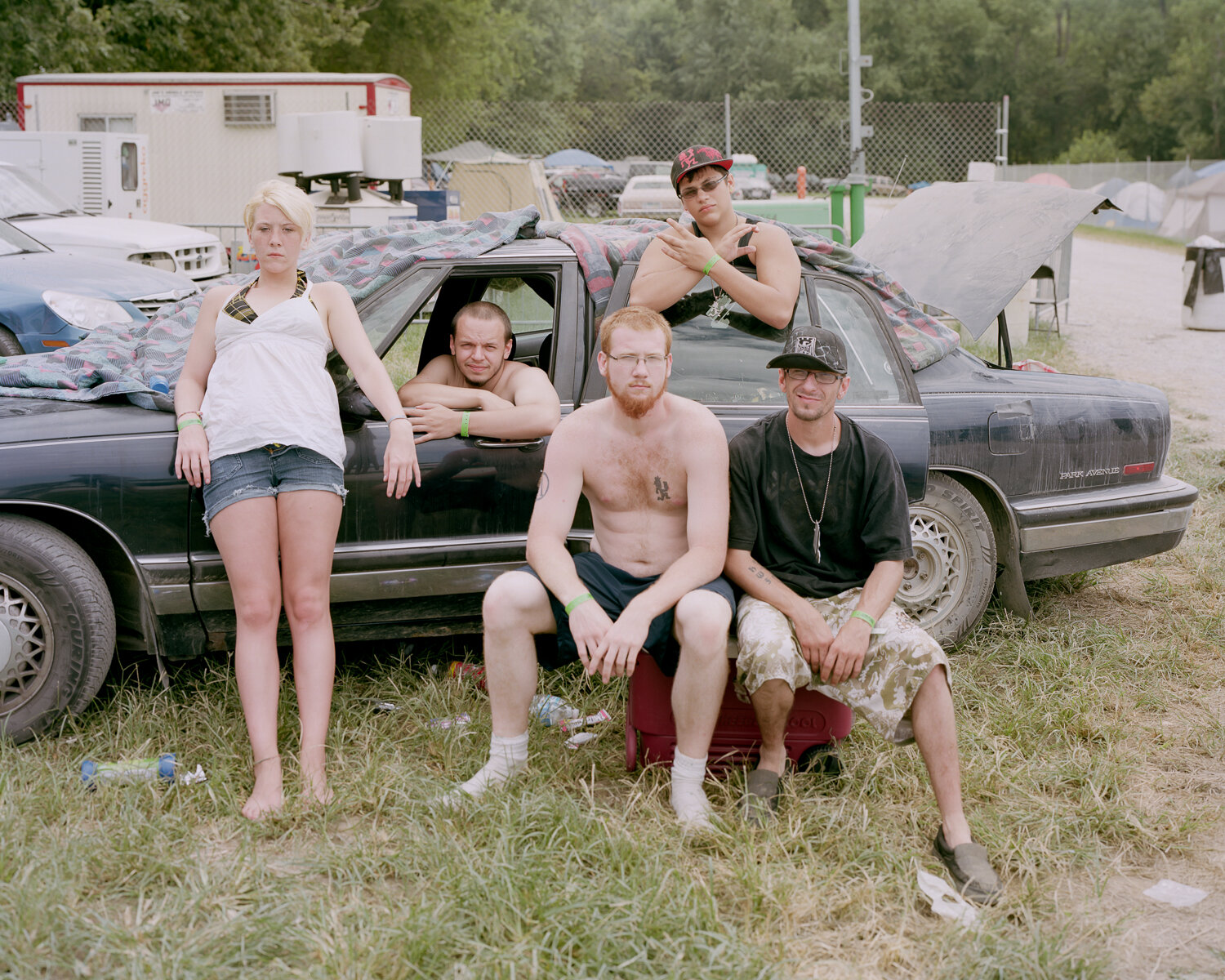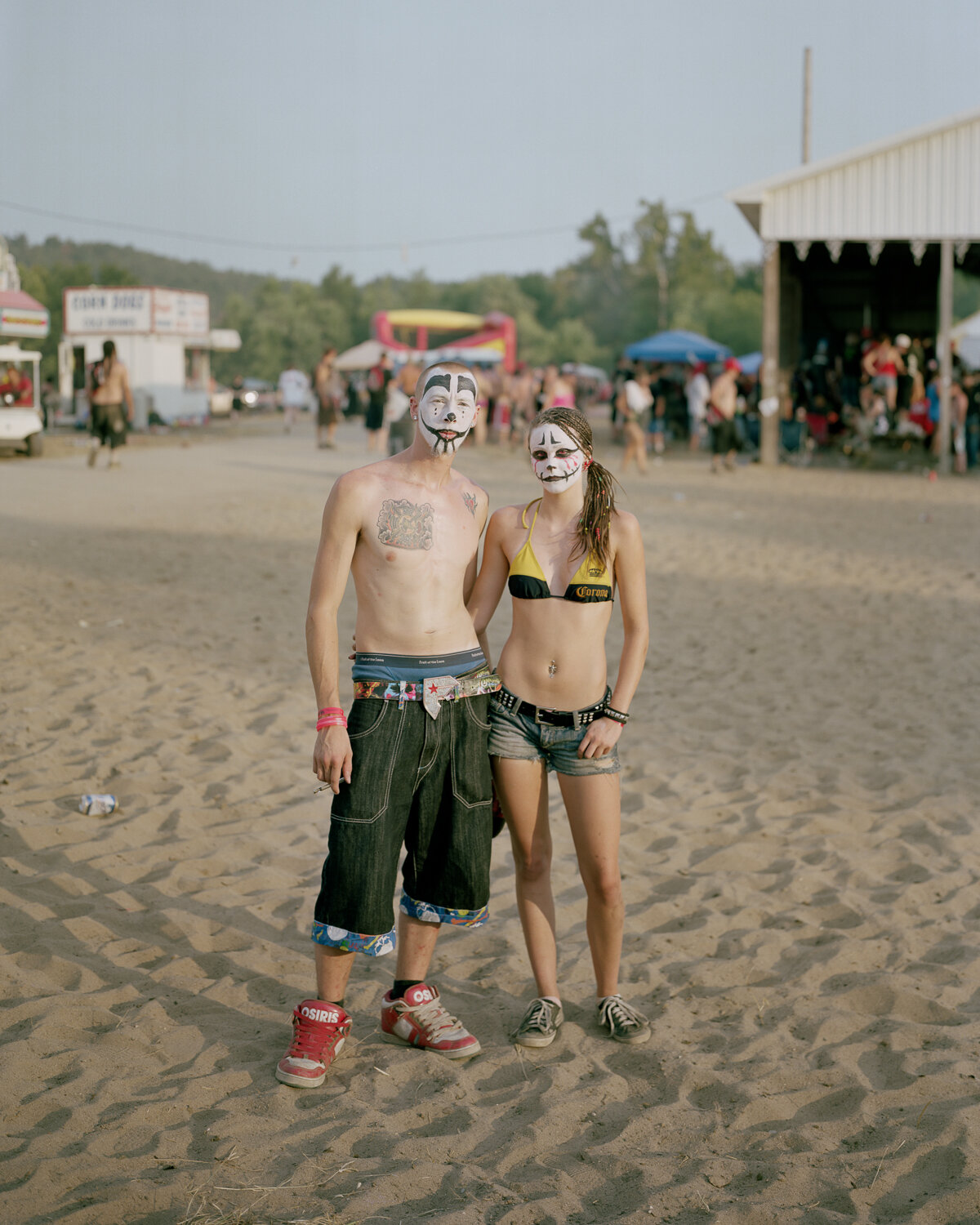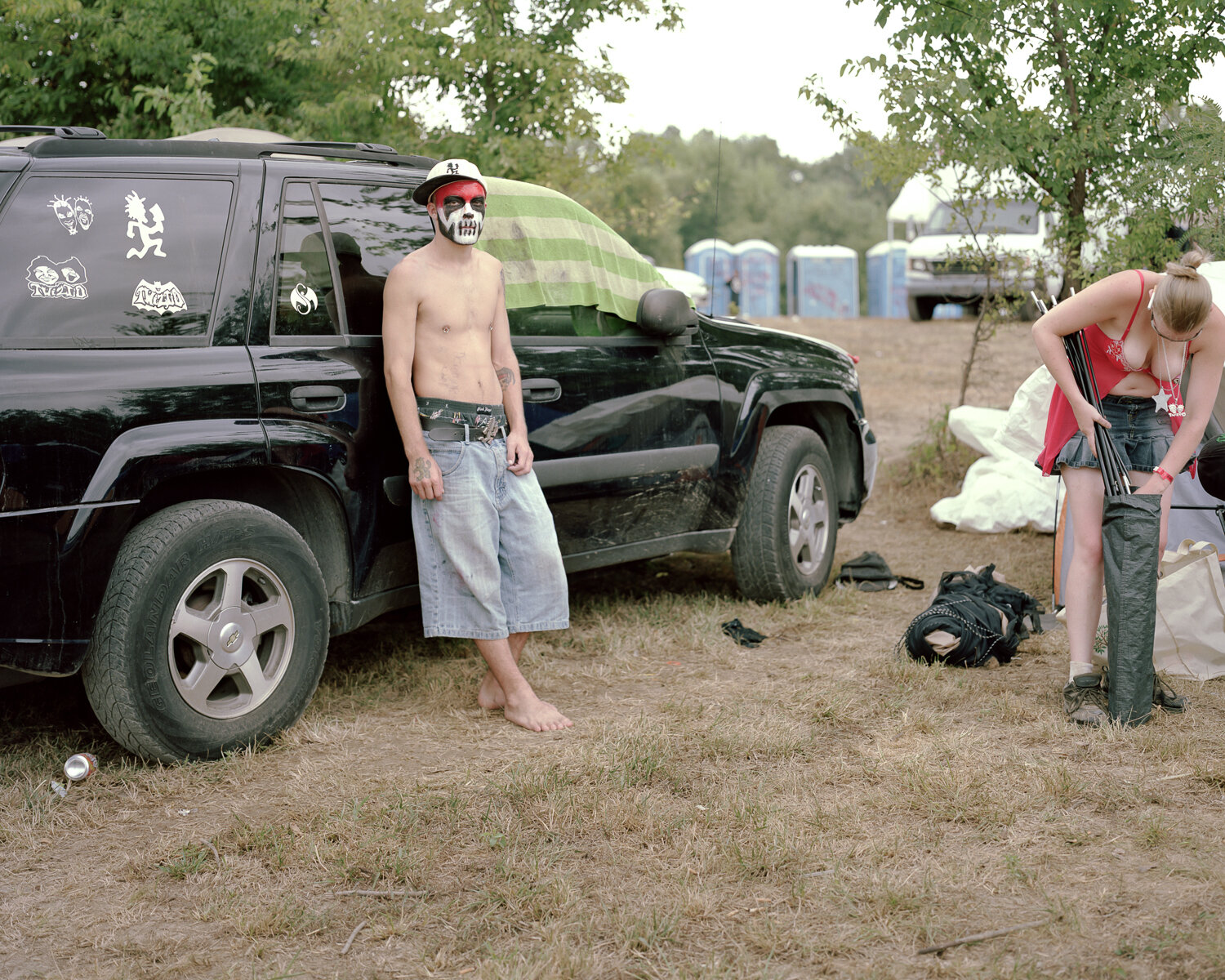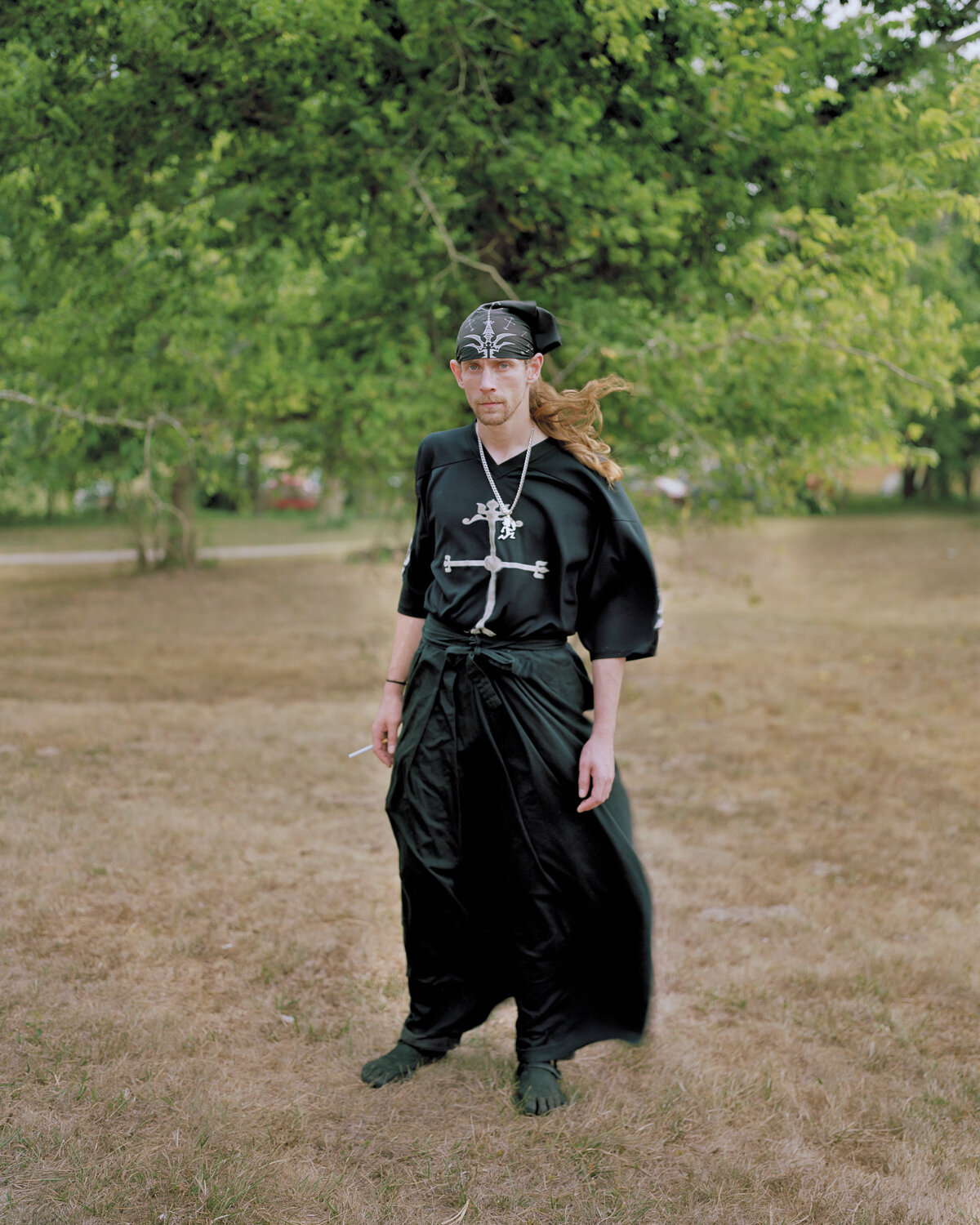Daniel Cronin
What led you to attending The Gathering of the Juggalos? How did you feel when you first arrived? In what ways did the atmosphere entice and / or invite you? Can you also describe your first year attending and how your approach or comfort has changed over the years since
I first started doing portraits of Jugglaos back in June of 2010. They played at the Portland Expo Center which is a place where concerts are rarely performed. At the time I was getting more into portraiture and wanted to start a new series. I realized I had never seen a series on Juggalos that didn't show them partying or being crazy in some sort of way. I knew that Juggalos showed up early to hang out before shows, so I showed up to the parking lot and shot about 15-20 photos of Juggalos and Juggaletts. One of them mentioned that I should go and shoot at The Gathering. He kind of put the idea in my head. Once I got my film back from that shoot I realized this was something I wanted to shoot more of and started to make plans to get out to The Gathering later that summer. I tried to do as much research as I could on what it would be like before I got there but nothing really prepares you for what it’s really like. I initially planned on camping out but ended up staying in a cheap hotel about 40 minutes away which ended up being the right choice. It allowed me to load and unload my film in a clean and dust free environment twice a day. There is no way I would have been able to pull it off sleeping in a tent about 300 feet from the main stage. It also allowed me to get a good night sleep every night which I desperately needed.
Overall the juggalos were very welcoming to me. I was one of only a handful of outside people there covering the 2010 Gathering. The thing that is hard to explain to people is how excited Juggalos are to be there. In some ways this is the one week out of the year where they get to be around a bunch of like-minded people. It’s hard not to get caught up in that energy and feeling. People are friendly. They gave me water, drinks, and even offered jello shots when they saw me carrying around this big camera and tripod in the 98F hot sun. I really appreciated that. The first few days out there I really didn't know what I was going to shoot or how I was going to approach it. It took me the first two days to realize visually what I wanted to shoot. I knew that it wasn't just going to just be straight forward portraits but also shooting to capture the textures, colors and those quiet moments of the festival. These quiet moments are never shown and therefore they really intrigued me.The 4 day festival is loud, hot, and over stimulating but if you keep your eyes open you can find these moments that don’t necessarily fall into those categories. I also was a little naive the first years I attended. As I continued to attend the Gathering I started to learn when the perfect light was. By the third year, I would really only shoot in the morning and late afternoon. I developed a shooting routine where around noon I would head back to the hotel, unload the film, load more and then head back and shoot from 4 until sundown.
Can you describe the festival in detail for someone who hasn’t attended or isn’t familiar with ICP?
The festival seems to change every few years because the venue it is held at changes. The three years I attended it was at a giant private RV and camping spot in southern Illinois. It was set along the banks of the Ohio River outside of a town called Cave In Rock. The Festival grounds were a mix of wooded areas and big dusty fields. The festival is very unique because there are no corporate sponsorships. It’s all put on by ICP's record label that they started (psychopathic records). When a festival doesn’t have "the budweiser stage" or corporate branding it creates a DIY feeling. I come from a more punk rock background and this do it yourself method really impressed me. ICP used to say they lost money on their festival every year but they choose this loss in order to let their fans have a good time. The festival has a lot going on besides just music. It has wrestling, a free bus that goes around the campground, even a helicopter ride you could take the first year I was there. There are carnival rides, there are comedy sets, and a lot of other smaller events. One of the great things too is the way the festival was scheduled, no big event really overlapped with anything else that was scheduled so you really could go see it all. The other thing people don't realize is its not just ICP/Psychopathic or horror core groups, ICP books some of their favorite groups as well. I used to listen to a lot of mid 90s hip hop and I got to see Ice Cube, Naughty By Nature, E-40, Busta Rhymes, Ghetto Boyz, Warren G, and George Clinton!
When approaching a subculture how do you address the stereotypes within a community? Do the stereotypes alter how you photograph someone?
This is something I wanted to be aware of. When I first started this I had never seen any photos or stories of Juggalos that didn’t come from a condescending perspective of "look at these drunk, white trash, crazy Juggalos." I knew that this wasn't the entire story and wanted to show another side. I went out there not knowing exactly what I was going to shoot and was open to not trying to force a narrative. After a few days I realized what I wanted to show. I looked for quiet moments that were an immediate contrast to the perspective normally shown of Juggalos. It is clear how much this festival means to those who attend, it creates a giant community and sense of family. People travel from all over the country and a few international attendees (UK, Russia) even make the trek to be present. I wanted to honor the community as best I could.
Shooting with a large format camera, what was it like to engage your subjects and how does the format help or hinder your process?
I don't think I would have been able to make this work if I wasn't shooting on large format. The second and third year I was at the festival there was an increase in media and press. A lot of Juggalos gave them a hard time because they were aware that they wouldn't necessarily show them in the best light. I would walk around with my camera on the tripod over my shoulder. People would engage me by saying, "whoa, thats a crazy camera." I would then stop and talk to them. I’d take time to show them how it worked, allowing them to look through the ground glass. If I wanted to take their photo I would then ask and often they would say yes. The camera became an ice breaker to engage with people. The other thing about shooting large format is you have to talk to your subjects and explain the process. I’d let them know they would have to hold still while I was focusing it. I’d clarify that it was going to the time to set up and shoot. During this time it allowed me to connect with people. I think it also made them more willing to let me take their photo. Over the course of 3 years only 2 or 3 people decided not to participate in being photographed.
Every year I came back more people would recognize me. It seemed to help validate my presence as a photographer. The one downside to shooting large format is it’s expensive. You aren't able to shoot as much because it’s a slow process. If I had used a medium format camera I would have been able to shoot much more, but I don't think I would have connected with the Juggalos as much.
To keep up to date with Daniel’s latest work follow along here:
Website: http://www.dcroninphoto.com/
Instagram: https://www.instagram.com/dcroninphoto/
https://danielcroninphotography.bigcartel.com/product/the-gathering-of-the-juggalos

